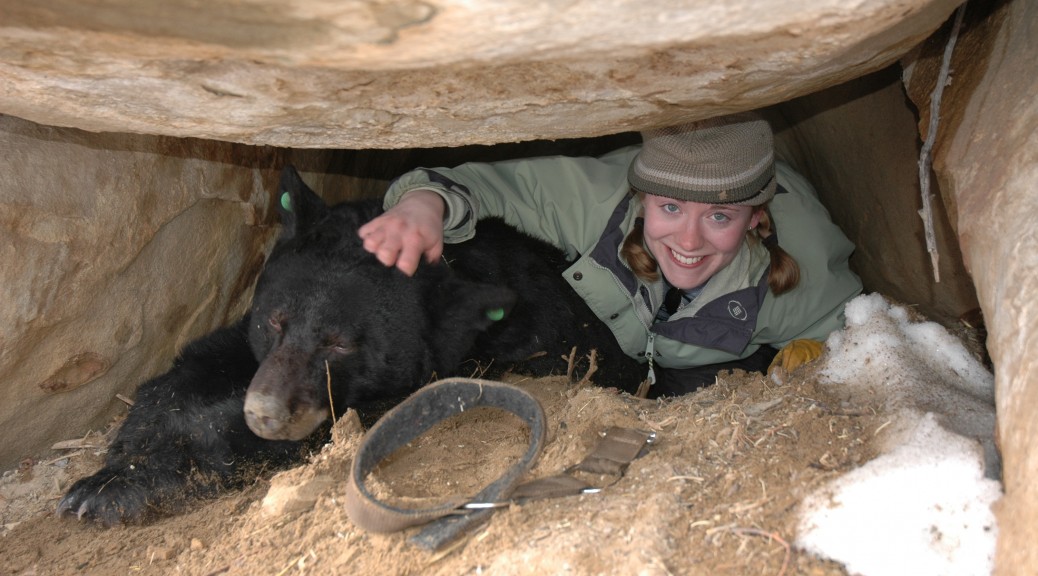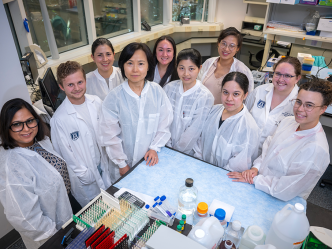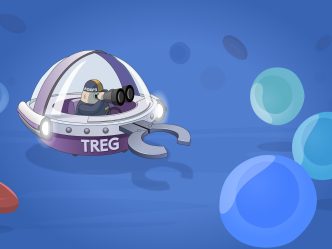From an engineering standpoint, the skeleton is a work of art.
A multifaceted structure providing both support and protection, it handles everything from storing vital minerals to producing red blood cells, all while allowing us to move. But it does so much more than that. Our teeth, for example, grind food into a more readily digestible form, making it easier for us to draw in the nutrients we need to survive. Our hands, which combined contain 54 of the body’s 206 total bones, have developed into universal tools capable of clawing, plucking, grasping and crushing with substantial strength. Pound for pound, our bones are more durable than steel.
In a way, the human skeleton is something of a dream machine.
Unfortunately, though, even the greatest machines break down.
Dr. Meghan McGee-Lawrence, an assistant professor in the Medical College of Georgia’s Department of Cellular Biology and Anatomy, has built a career on the back of skeletal research. Recently, she and a team of researchers headed by Colorado State University’s Dr. Seth Donahue, may have discovered something to help keep that machine running a little more smoothly.
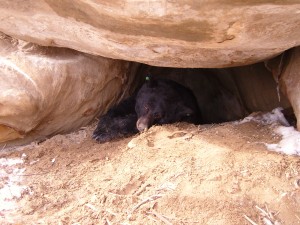
The secret? Sleeping black bears.
“Years ago, Seth started thinking about the effects of mechanical loading on bones,” said McGee-Lawrence, who began her research as one of Donahue’s lab assistants at Michigan Technological University. “He was interested in the mechanical response of bone tissue, because that’s his background – biomechanical engineering.”
Living and working in Michigan’s Upper Peninsula at the time, Donahue’s thoughts eventually led him and his team into the wild. More specifically, it led them to an animal – the common black bear.
“He started thinking about, well, what happens when a bear hibernates? It’s lying down; it’s sleeping for six months,” said McGee-Lawrence. “You’d expect that, if black bears had skeletons that worked like other animals, they’d lose bone during that time.”
Use it or lose it is an all-too-common concept, especially among scientists working with the skeleton. As a living system, our skeletons are in a constant state of flux. When bone tissue ages or becomes damaged, specialized cells known as osteoclasts dissolve it, returning calcium and other trace minerals to the body to be either repurposed or excreted. At the same time, new tissue is being generated by another specialized type of cell known as osteoblasts. In an ideal situation, the two cell types work in tandem, removing old tissue and replacing it at a similar rate.
That isn’t always the case, however.
Bone disorders such as osteoporosis and osteopenia occur when tissue is resorbed faster than it can be created – a condition that’s exacerbated by age and a prolonged lack of movement. After six months of rest, then, black bears should have been prime candidates for debilitating bone disorders.
But they weren’t.
“Nobody had ever really looked at that before,” said McGee-Lawrence. “There were a couple of random studies where people had said ‘bears probably don’t lose bone,’ but a real, thorough study hadn’t been done. So that’s where the project got started.”
McGee-Lawrence said the decision to work with bears was influenced partly by convenience, and partly by the uniqueness of the animal model.
“You’d be surprised how often I get questions about what hibernates and what doesn’t,” she said. “There are plenty of other hibernators. Bears are probably the largest, but you have some ground squirrels, some bats, that also hibernate.”
The problem is, smaller hibernators tend to be bad at hibernating.
“When a bear hibernates, they typically sleep for a period of months,” said McGee-Lawrence. “Some sleep a little less, but in the North, the average is around six months.”
During that time, the bear becomes a closed system; it does not eat, drink or excrete during hibernation, something smaller hibernators cannot do.
“Smaller hibernators, every couple of weeks they’ll raise their body temperature and wake up to eat, drink, excrete,” said McGee-Lawrence. “Then, after they’ve taken care of that, they’ll lower their temperature back down. There’s a significant metabolic difference between smaller hibernators and bears that was important to our research.”
Settled on studying bears, McGee-Lawrence and her team, headed by Donahue, reached out to an unlikely, but easy, source of samples. Meat processing plants.
“There’s a big fall hunting season in Michigan,” said McGee-Lawrence. “That’s where we got our first samples in the Upper Peninsula; we had easy access to bone samples by going around to meat processing plants and finding tissue from bears that had been killed by hunters.”
Then, after finding tissue to study the status of bone and tissue samples during the winter hibernation period, the research moved to Utah.
“There’s both a fall and a spring hunting season for bears in Utah,” she said. “You could find tissue samples in the spring from bears who had just come out of the den versus bears who were preparing to go into hibernation. It was a good starting point for figuring out what happens during hibernation.”
From there, however, there was only one place left to go for the research.
The team had to start studying live bears.
“Working with live bears was outstanding,” said McGee-Lawrence, smiling fondly over a picture of herself with a live, and sedated, black bear. “It’s as exciting as you’d expect.”
For the most part, McGee-Lawrence said she worked vicariously through other researchers a lot of the time, receiving bone and tissue samples that were sent back to the lab. On a few special occasions, though, she went straight to the source.
“I got a chance to go to Utah, where they were tracking radio-collared bears,” she said. “We got to go out and track them, which was a very cool experience for me. I also had an opportunity to go to Washington, where we studied captive grizzlies. That time, I actually went in and collected the samples myself.”

Despite the mental images conjured by the thought of working with live bears, McGee-Lawrence said the danger was minimal. While she and her team were performing research, other scientists were studying the same animals, and always with a handler.
“Anytime you’re studying a unique animal model, like a bear, that’s in short supply, you want to make the most use of the study,” she said. “It’s not like we were just studying bone. There were also people there studying the cardiac system and the muscles, so we always had a team around. And there was always somebody there who was very well-prepared to deal with a large animal model.”
She stressed that the animals her team worked with were always safely anesthetized.
After working with live bears and taking yet more samples, McGee-Lawrence and her team made a fascinating discovery. Over the course of hibernation, their subjects had lost and gained virtually no bone density. Six months of rest had almost no effect whatsoever on the strength of the bears’ bones.
McGee-Lawrence, led by Donahue and assisted by four other authors, published their findings in the July issue of The Journal of Experimental Biology. Since then, their article, titled “Suppressed bone remodeling in black bears conserves energy and bone mass during hibernation,” has received global attention.
According to McGee-Lawrence, Donahue and the team immediately understood what they’d found. An animal that can sit still for six months, unfazed by the negative effects of bone resorption, could be extremely beneficial for understanding how the body regulates bone loss.
But the team’s research won’t stop there.
“Once we found out that the bears didn’t lose bone when they hibernated, that meant something was unique about them,” said McGee-Lawrence. “The natural next question was, ‘How can we use that for humans?’”
From a medical perspective, surely the sky must be the limit, right? Aim a little higher, said McGee-Lawrence.
“All the cells in your skeleton are used to being weighed down by gravitational forces and mechanical forces from walking and running, things like that,” she said. “Who doesn’t deal with that? Astronauts. As soon as an astronaut goes up into space, all of those loads are gone.”
While that kind of weightlessness might seem like a dream to some, the damage it does to our bones is detrimental.
“Because bone is such an important mechanical tissue, bone cells maintain bone mass in proportion to the loads that it experiences,” she said. “When those loads are gone, the skeletal cells are going to sense that and get rid of some of that skeletal mass.”
And they get rid of a lot, sometimes up to as much as two percent per month spent in space. That kind of wear and tear makes lengthy space flights, like the proposed missions to Mars, nearly impossible. Because of this, McGee-Lawrence said, astronauts join the list alongside partially paralyzed and osteoporotic patients as potential beneficiaries of her team’s research.
She said current treatments, while somewhat effective, just aren’t cutting it.
“As you can imagine, NASA doesn’t want a bunch of osteoporotic astronauts, so they have therapies in place,” she said. “They have vacuum treadmills, where the astronaut is literally vacuumed down into a self-contained treadmill, and they have a lot of resistance bands. But those treatments just aren’t that reliable. It’s exciting to think about how that could change in the coming years.”
Speaking of change, McGee-Lawrence said the next step for her team’s research seems clear.
“What we did in the current paper was figure out how different proteins and enzymes affect bone, how they change over the course of hibernation,” she said. “The next step is figuring out how those things are changing. Ultimately, we want to understand, when a bear hibernates, how is it controlling bone mass? We haven’t answered that. We know they don’t lose bone, and we know how a number of things that affect bone are changing. But we don’t know the next level up from that – ultimately, what’s regulating it.”
Thankfully, based on previous hibernation studies, the team has a good foundation to work from. At present, the likeliest culprit for bear bone preservation is the hypothalamus, the part of the brain that regulates temperature, hunger, thirst and other biological processes in humans.
“We know from other researchers that hibernation is controlled by the hypothalamus, so it’s probably some central mechanism that not only helps to preserve the skeleton, but also helps to regulate energy conservation and all of these other biological changes,” said McGee-Lawrence.
Regardless of where their research takes them, however, McGee-Lawrence said her team is looking forward to the endgame – treating serious bone disorders.
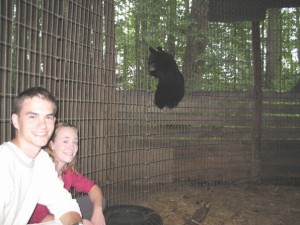
“Even if what’s happening in the bears is regulated by the brain and isn’t something that can be replicated exactly in an astronaut or an osteoporotic patient, if you can figure out kind of that intermediate step between the central control and what’s affecting the skeleton, you can narrow in on maybe a protein that could be turned into a drug therapy.”
And that, McGee-Lawrence said, is the market of the future.
 Augusta University
Augusta University
